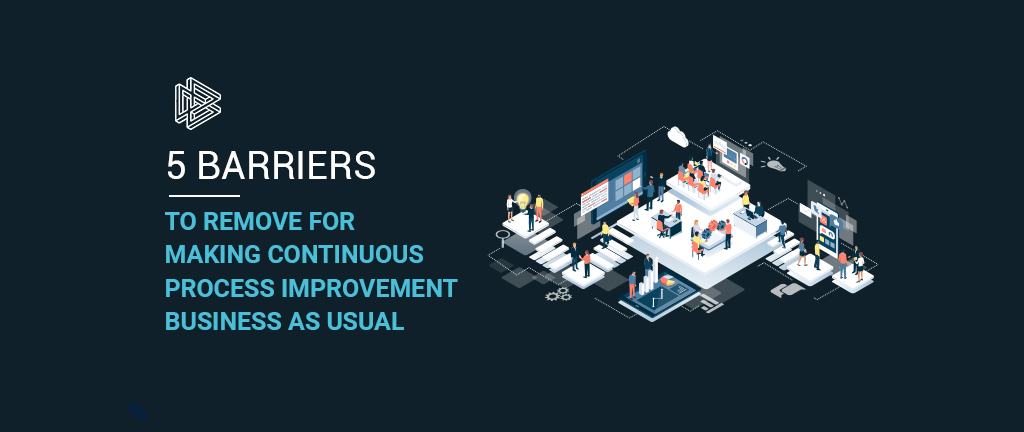In today’s fast-paced business environment, process improvement has emerged as a business imperative for organisations. A sustainable way to drive competitive advantage. Increasingly as organisations continue to see the numerous benefits of business process improvement, they are focusing on embedding it into their organisational DNA. Turning process improvement into an ongoing process and an integral part of the way the business runs.
But all too often organisations are not able to keep pace with their process improvement efforts. Initial momentum fizzles off mid-way through the project and the team loses motivation and interest. If continuous improvement is so critical for business success, what prevents the organisations to keep the journey going?
We look at 5 key barriers that prevent continuous improvement success:
Barrier #1: Not being specific and clear on requirements
Underestimating the scope and scale of the project is one of the biggest mistakes that can significantly hamper the initial momentum of the continuous improvement project. Process Improvement is a formidable undertaking—it’s not just some one-time project, it is something that an organisation wants to adopt as a DNA. Since it’s a business-wide project and the impact is far-reaching, you need to carry out due diligence and invest correctly in the standards, tools, templates, etc.
Barrier #2: Not ensuring the leader buy-in
Failing to involve the senior management is one of the reasons why projects lose steam after the initial months. If the senior management does not see how process improvement can help them achieve their business goals, they will see little point in allowing their teams to spend time in mapping and improvement activities. On the other hand, leader involvement and support results in project success and sustainability.
Barrier #3: Not defining process mapping responsibilities
Getting anybody and everybody in the organisation to start mapping is a major pitfall that can make your project completely lose track. You simply cannot build everybody’s capability and bring them to the same level in terms of standards, tools, templates, etc. With everybody mapping, processes are documented at various levels in the organisation. These processes don’t look the same, they don’t connect. This leads to absolute chaos.
Identify the process mapping team and define the governance model: centralised or decentralised, based on your process maturity. Process mapping responsibilities need to be clearly defined to ensure the set standards, templates are being followed and the momentum is maintained.
Barrier #4: Not focusing on the toolset
Lack of attention to the appropriate tool poses a major risk to your goal of continuous improvement. Empowering the teams with a right-fit tool is the only way to ensure different business units are on the same page and mapping, analysing and improving consistently. If you are expecting the teams to manage 1,000-2,000 processes without a tool, then your project is doomed at the outset. A tool is a must-have as it drives the behaviour automatically.
Look for a tool that has a built-in methodology as it needs to be capable of managing end-to-end improvement right from documentation to collaboration with the frontline staff. Secondly, in order to futureproof the project, ensure that the tool is embedded with worldwide accepted standards and should have built-in quality management principles, such as Six Sigma. Further, look for a tool that has the functionality to manage risk and compliance.
A tool that also allows to automate the improved processes will deliver quick value and keep the team committed towards the goal of continuous improvement. The ability to identify automation opportunities will be a big plus as having separate tools for mapping and automation activities can delay the whole process and add months or years to reach the continuous improvement stage.
Barrier #5: Not focusing on employee engagement
For continuous improvement efforts to be truly successful, the involvement of frontline staff is a must. Since the frontline staff executes the process, they understand the flaws and improvement opportunities within the processes more than any dedicated process mapping and improvement team. Hence, the organisations that set and forget the processes are completely missing the mark. Regular feedback of frontline employees needs to be taken and acted upon to make continuous improvement a BAU activity. Involving the employees also makes them feel connected to the goals and avoids any resistance to change.
Contact Us to know how PRIME BPM can be your perfect partner in building a culture of continuous improvement in your organisation. From a cloud-based Business Process Management software to practical training courses, PRIME BPM offers products and services that can be used in any combination to assist you at any stage of your continuous improvement journey.


